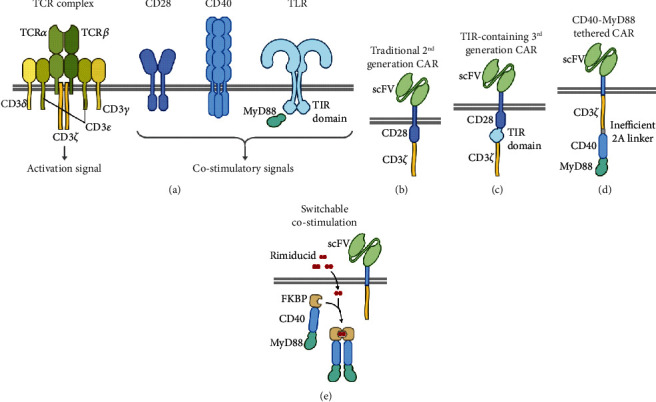Figure 2.

TLR-based strategies for improvement of CAR T cells. (a) Schematic presentation of wild-type T cell proteins from which signaling domains are derived to construct chimeric synthetic receptors. (b) Traditional second-generation CAR containing an scFV domain for antigen recognition on the extracellular portion and CD3ζ and costimulatory signaling domains on the cytosolic side (CD28 domain is shown here as an example). (c) A third-generation CAR with a TIR signaling domain derived from TLRs. (d) A CD40-MyD88 fusion protein tethered to a first-generation CAR through an inefficient 2A linker. (e) The CD40-MyD88 fusion is linked to a rimiducid-binding domain from an FKBP protein to form a pharmacological switch that can transmit a costimulatory signal by dimerization upon rimiducid treatment.
